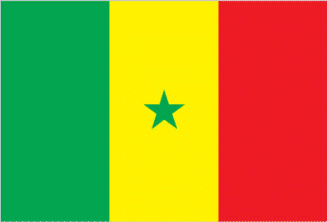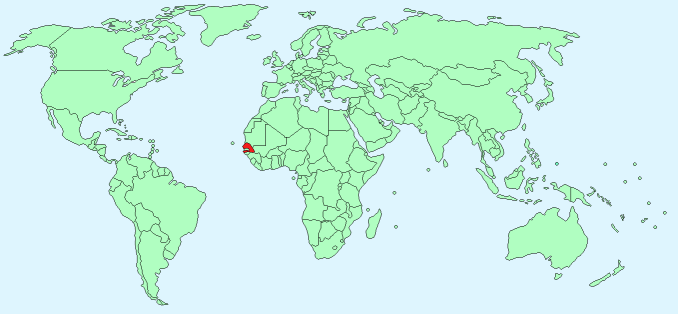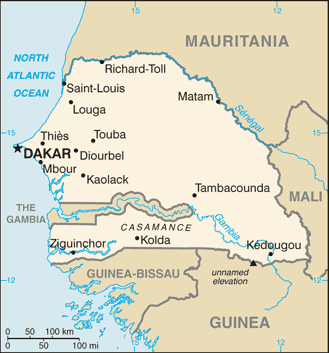Senegal


Continent – Africa
Region – Western Africa
Size – 196,72 km²
Geography – low rolling plains with some hills in the south
Language – French, Mandinka, Wolof, Pulaar, Jola
Religion – Muslim 94%, Christian 5%, other 1%
Monetary Unit -West African CFA franc
Natural Resources – fish, phosphates, iron ore
Agriculture – peanuts, millet, corn, sorghum, rice, cotton, tomatoes, green vegetables; cattle, poultry, pigs; fish
Industry – agricultural and fish processing, phosphate mining, fertilizer production, petroleum refining, zircon, and gold mining, construction materials, ship construction and repair

Neighbouring Countries – Mauritania, Mali, Guinea, Guinea-Bissau, The Gambia
Population – 13,975,834 (2015 estimate)
Population Growth Rate – 2.45%
Average Life Expectancy – 61.32
Capital City – Dakar (3,520,000)
Highest Mountain – unnamed location (581 m)
Longest River – Senegal River (1,790 km in Mauritania, Senegal and Mali)
Climate – June – November – topical, hot, rainy 23°C to 30°C – November – May – cooler, dry season 17°C to 26°C
Yearly Rainfall – 35 cm mostly August and September
Plant Life – mangrove, oil palms, bamboo, African teak, silk-cotton tree, acacia, baobab tree, African locust bean, tallow tree, gingerbread plum tree, savannah grasses
Animal Life – lion, leopard, chimpanzees, elephants, hippopotamuses, giraffes, monkeys, buffalo, porcupine, wild pig, hare, lizards, snakes
Bird Life – guinea fowl, quail, bustard, pelican, vultures
Harvard Reference for this page:
Heather Y Wheeler. (2015). Senegal. Available: https://www.naturalhistoryonthenet.com/Facts_Figures/Country_Facts/senegal.htm. Last accessed Tuesday, July 19, 2016
Facts and Figures Pages
